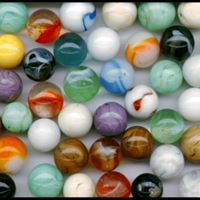Feng F Gao
age ~64
from Foster City, CA
- Also known as:
-
- Stephanie Feng Gao
- Feng G Wang
- Fang Wang
- Eng Wang
- En G Wang
- Fen G Wang
- Gao Wang Feng
- Phone and address:
- 1000 Foster City Blvd APT 7202, San Mateo, CA 94404
Feng Gao Phones & Addresses
- 1000 Foster City Blvd APT 7202, San Mateo, CA 94404
- Foster City, CA
- Daly City, CA
- Millbrae, CA
- Oakland, CA
- Chino, CA
- Fremont, CA
Name / Title
Company / Classification
Phones & Addresses
Manager
Silicon Storage Technology Inc
Semiconductor and Related Device Manufacturing · Semiconductors & Related Devices Mfg
Semiconductor and Related Device Manufacturing · Semiconductors & Related Devices Mfg
1171 Sonora Ct, Sunnyvale, CA 94086
4087359110, 4087359036, 4085237646, 4085237788
4087359110, 4087359036, 4085237646, 4085237788
President
AMERICAN CHAMPION TRAVEL, INC
1710 S Amphlett Blvd STE 10B, San Mateo, CA 94402
President
AMVILLAGE INTERNATIONAL INC
177 Bovet Rd #600, San Mateo, CA 94402
President
PACO WORLD COOPERATION INC
1470 Sand Hl Rd #103, Palo Alto, CA 94304
Managing
Zenith Fasteners LLC
Fastners Import & Wholesale · Metals Service Center
Fastners Import & Wholesale · Metals Service Center
60 Marblehead Ln, Novato, CA 94949
4153820398
4153820398
Resumes

Feng Gao
view sourceWork:
Dawn Specialty Service, LLC
St. Louis, MO
May 2008 to Dec 2012
Data Administrator eBay Online Business
Oct 2002 to Apr 2008 Harbin Hold computer Company
Harbin, CN
Sep 1999 to Mar 2002
Project Manager and SQL Developer
St. Louis, MO
May 2008 to Dec 2012
Data Administrator eBay Online Business
Oct 2002 to Apr 2008 Harbin Hold computer Company
Harbin, CN
Sep 1999 to Mar 2002
Project Manager and SQL Developer
Education:
Harbin University of Science and Technology
Jun 1999
B.S. in Application Electric Technology
Jun 1999
B.S. in Application Electric Technology
Isbn (Books And Publications)


Zhen Shi De Mao Zedong: Mao Zedong Shen Bian Gong Zuo Ren Yuan De Hui Yi
view sourceAuthor
Feng Gao
ISBN #
7507315479
Medicine Doctors

Feng Gao, Union City CA
view sourceSpecialties:
Nursing (Registered Nurse)
Address:
32711 Red Maple St, Union City, CA 94587
Languages:
English
Us Patents
-
Gas Distribution System For A Cvd Processing Chamber
view source -
US Patent:6486081, Nov 26, 2002
-
Filed:Nov 24, 1999
-
Appl. No.:09/449203
-
Inventors:Tetsuya Ishikawa - Santa Clara CA
Padmanabhan Krishnaraj - Mountain View CA
Feng Gao - Mountain View CA
Alan W. Collins - San Francisco CA
Lily Pang - Fremont CA -
Assignee:Applied Materials, Inc. - Santa Clara CA
-
International Classification:H01L 2131
-
US Classification:438788, 438787, 438789, 438792
-
Abstract:The present invention provides an apparatus for depositing a film on a substrate comprising a processing chamber, a substrate support member disposed within the chamber, a first gas inlet, a second gas inlet, a plasma generator and a gas exhaust. The first gas inlet provides a first gas at a first distance from an interior surface of the chamber, and the second gas inlet provides a second gas at a second distance that is closer than the first distance from the interior surface of the chamber. Thus, the second gas creates a higher partial pressure adjacent the interior surface of the chamber to significantly reduce deposition from the first gas onto the interior surface. The present invention also provides a method for depositing a FSG film on a substrate comprising: introducing first gas through a first gas inlet at a first distance from an interior surface of the chamber, and introducing a second gas through a second gas inlet at a second distance from the interior surface of the chamber, wherein the second gas creates a higher partial pressure adjacent the interior surface of the chamber to prevent deposition from the first gas on the interior surface. Alternatively, the first gas is introduced at a different angle from the second gas with respect to a substrate surface.
-
Method Of Reducing Plasma Charge Damage For Plasma Processes
view source -
US Patent:6660662, Dec 9, 2003
-
Filed:Jan 26, 2001
-
Appl. No.:09/771203
-
Inventors:Tetsuya Ishikawa - Santa Clara CA
Alexandros T. Demos - San Ramon CA
Feng Gao - Mountain View CA
Kaveh F. Niazi - Santa Clara CA
Michio Aruga - Inba-Gun, JP -
Assignee:Applied Materials, Inc. - Santa Clara CA
-
International Classification:H01L 2144
-
US Classification:438787, 438680, 438681, 438788
-
Abstract:A method is provided for depositing a thin film on a substrate in a process chamber with reduced incidence of plasma charge damage. A process gas containing a precursor gases suitable for forming a plasma is flowed into a process chamber, and a plasma is generated from the process gas to deposit the thin film on the substrate. The precursor gases are flowed into the process chamber such that the thin film is deposited at the center of the substrate more rapidly than at an edge of the substrate.
-
Cleaning Residues From Surfaces In A Chamber By Sputtering Sacrificial Substrates
view source -
US Patent:6814814, Nov 9, 2004
-
Filed:Mar 29, 2002
-
Appl. No.:10/109736
-
Inventors:Alan W. Collins - San Francisco CA
Feng Gao - Fremont CA
Tetsuya Ishikawa - Santa Clara CA
Padmanaban Krishnaraj - San Francisco CA
Yaxin Wang - Fremont CA -
Assignee:Applied Materials, Inc. - Santa Clara CA
-
International Classification:B08B 312
-
US Classification:134 1, 134 11, 134 221, 134 22, 134 30, 134 56 R, 134 951, 134166 R, 216 37, 216 67, 216 71, 438714, 438905, 438906
-
Abstract:In a method of cleaning process residues formed on surfaces in a substrate processing chamber, a sacrificial substrate comprising a sacrificial material is placed in the chamber, a sputtering gas is introduced into the chamber, and the sputtering gas is energized to sputter the sacrificial material from the substrate. The sputtered sacrificial material reacts with residues on the chamber surfaces to clean them. In one version, the sacrificial substrate comprises a silicon-containing material that when sputtered deposits silicon on the chamber walls that reacts with and cleans fluorine-containing species that are left behind by a chamber cleaning process.
-
Multi-Bit Rom Cell, For Storing On Of N>4 Possible States And Having Bi-Directional Read, An Array Of Such Cells
view source -
US Patent:6927993, Aug 9, 2005
-
Filed:Aug 14, 2003
-
Appl. No.:10/642079
-
Inventors:Bomy Chen - Cupertino CA, US
Kai Man Yue - Yuen Long, HK
Dana Lee - Santa Clara CA, US
Feng Gao - Sunnyvale CA, US -
Assignee:Silicon Storage Technology, Inc. - Sunnyvale CA
-
International Classification:G11C017/00
-
US Classification:365104, 365 94
-
Abstract:A array of multi-bit Read Only Memory (ROM) cells is in a semiconductor substrate of a first conductivity type with a first concentration. Each ROM cell has a first and second regions of a second conductivity type spaced apart from one another in the substrate. A channel is between the first and second regions. The channel has three portions, a first portion, a second portion and a third portion. A gate is spaced apart and is insulated from at least the second portion of the channel. Each ROM cell has one of a plurality of N possible states, where N is greater than 2. The state of each ROM cell is determined by the existence or absence of extensions or halos that are formed in the first portion of the channel and adjacent to the first region and/or in the third portion of the channel adjacent to the second region. These extensions and halos are formed at the same time that extensions or halos are formed in MOS transistors in other parts of the integrated circuit device, thereby reducing cost. The array of ROM cells are arranged in a plurality of rows and columns, with ROM cells in the same row having their gates connected together.
-
Multi-Bit Rom Cell, For Storing One Of N>4 Possible States And Having Bi-Directional Read, An Array Of Such Cells, And A Method For Making The Array
view source -
US Patent:6992909, Jan 31, 2006
-
Filed:Jun 20, 2005
-
Appl. No.:11/157318
-
Inventors:Bomy Chen - Cupertino CA, US
Kai Man Yue - Yuen Long N.T., HK
Dana Lee - Santa Clara CA, US
Feng Gao - Sunnyvale CA, US -
Assignee:Silicon Storage Techtology, Inc. - Sunnyvale CA
-
International Classification:G11C 17/00
-
US Classification:365 94, 365104, 438527
-
Abstract:A array of multi-bit Read Only Memory (ROM) cells is in a semiconductor substrate of a first conductivity type with a first concentration. Each ROM cell has a first and second regions of a second conductivity type spaced apart from one another in the substrate. A channel is between the first and second regions. The channel has three portions, a first portion, a second portion and a third portion. A gate is spaced apart and is insulated from at least the second portion of the channel. Each ROM cell has one of a plurality of N possible states, where N is greater than 2. The state of each ROM cell is determined by the existence or absence of extensions or halos that are formed in the first portion of the channel and adjacent to the first region and/or in the third portion of the channel adjacent to the second region. These extensions and halos are formed at the same time that extensions or halos are formed in MOS transistors in other parts of the integrated circuit device, thereby reducing cost. The array of ROM cells are arranged in a plurality of rows and columns, with ROM cells in the same row having their gates connected together.
-
Apparatus For Reducing Plasma Charge Damage For Plasma Processes
view source -
US Patent:7036453, May 2, 2006
-
Filed:Sep 8, 2003
-
Appl. No.:10/658350
-
Inventors:Tetsuya Ishikawa - Santa Clara CA, US
Alexandros T. Demos - San Ramon CA, US
Feng Gao - Mountain View CA, US
Kaveh F. Niazi - Santa Clara CA, US
Michio Aruga - Inba-Gun, JP -
Assignee:Applied Materials, Inc. - Santa Clara CA
-
International Classification:C23C 16/00
-
US Classification:118723R, 118715, 438787, 438788
-
Abstract:A method is provided for depositing a thin film on a substrate in a process chamber with reduced incidence of plasma charge damage. A process gas containing a precursor gases suitable for forming a plasma is flowed into a process chamber, and a plasma is generated from the process gas to deposit the thin film on the substrate. The precursor gases are flowed into the process chamber such that the thin film is deposited at the center of the substrate more rapidly than at an edge of the substrate.
-
Split Gate Nand Flash Memory Structure And Array, Method Of Programming, Erasing And Reading Thereof, And Method Of Manufacturing
view source -
US Patent:7242051, Jul 10, 2007
-
Filed:May 20, 2005
-
Appl. No.:11/134540
-
Inventors:Yuniarto Widjaja - San Jose CA, US
John W. Cooksey - Brentwood CA, US
Changyuan Chen - Sunnyvale CA, US
Feng Gao - Sunnyvale CA, US
Ya-Fen Lin - Santa Clara CA, US
Dana Lee - Santa Clara CA, US -
Assignee:Silicon Storage Technology, Inc. - Sunnyvale CA
-
International Classification:H01L 29/788
-
US Classification:257316, 257317, 257319, 257E29129, 257E293
-
Abstract:A split gate NAND flash memory structure is formed on a semiconductor substrate of a first conductivity type. The NAND structure comprises a first region of a second conductivity type in the substrate with a second region of the second conductivity type in the substrate, spaced apart from the first region. A continuous first channel region is defined between the first region and the second region. A plurality of floating gates are spaced apart from one another with each positioned over a separate portion of the channel region. A plurality of control gates are provided with each associated with and adjacent to a floating gate. Each control gate has two portions: a first portion over a portion of the channel region and a second portion over the associated floating gate and capacitively coupled thereto.
-
Bidirectional Split Gate Nand Flash Memory Structure And Array, Method Of Programming, Erasing And Reading Thereof, And Method Of Manufacturing
view source -
US Patent:7247907, Jul 24, 2007
-
Filed:May 20, 2005
-
Appl. No.:11/134557
-
Inventors:Feng Gao - Sunnyvale CA, US
Ya-Fen Lin - Santa Clara CA, US
John W. Cooksey - Brentwood CA, US
Changyuan Chen - Sunnyvale CA, US
Yuniarto Widjaja - San Jose CA, US
Dana Lee - Santa Clara CA, US -
Assignee:Silicon Storage Technology, Inc. - Sunnyvale CA
-
International Classification:H01L 29/788
-
US Classification:257315, 257316, 257321, 257324, 257326, 438201, 438257, 438258
-
Abstract:A split gate NAND flash memory structure is formed on a semiconductor substrate of a first conductivity type. The NAND structure comprises a first region of a second conductivity type and a second region of the second conductivity type in the substrate, spaced apart from the first region, thereby defining a channel region therebetween. A plurality of floating gates are spaced apart from one another and each is insulated from the channel region. A plurality of control gates are spaced apart from one another, with each control gate insulated from the channel region. Each of the control gate is between a pair of floating gates and is capacitively coupled to the pair of floating gates. A plurality of select gates are spaced apart from one another, with each select gate insulated from the channel region. Each select gate is between a pair of floating gates.
Plaxo

Feng Gao
view sourceFeng 素質
News

NIH-halted study unveils its massive analysis of bat coronaviruses
view source- Duke Universitys Feng Gao, who led an analysis published on 29 May in Science about the evolution of SARS-CoV-2, says the new work by Daszak, Shi, and colleagues underscores that researchers have just sampled the tip of the iceberg of the coronaviruses circulating between bats that could jump int
- Date: Jun 01, 2020
- Category: Health
- Source: Google

Evolution of pandemic coronavirus outlines path from animals to humans
view source- "Very much like the original SARS that jumped from bats to civets, or MERS that went from bats to dromedary camels, and then to humans, the progenitor of this pandemic coronavirus underwent evolutionary changes in its genetic material that enabled it to eventually infect humans," said Feng Gao, M.D.
- Date: May 29, 2020
- Category: Health
- Source: Google
Flickr
Myspace
Googleplus

Feng Gao
About:
日久見人心 ^^
Bragging Rights:
中華足球奧運培訓隊^^

Feng Gao
Work:
Fujitsu
Sangfor
Sangfor
Education:
NEU - Software college

Feng Gao
Education:
University of California, Berkeley, Sun Yat-sen University
About:
I feel good just to keep my blogs up-to-date.

Feng Gao
Work:
YiLongFeng Tech.Co.,Ltd - President
Education:
University College London

Feng Gao
About:
糕盼的平方

Feng Gao (Gloria)
Lived:
Pleasanton, CA

Feng Gao
Education:
Peking University

Feng Gao
Education:
University College of Gävle
Classmates

Feng Gao
view sourceSchools:
Jinan University Guangzhou China 1967-1971

Feng Gao
view sourceSchools:
Windsor School Flushing NY 2001-2005
Community:
Bruce Eder, Jean Sobolow, Linda Comac, David Federbush

Feng Gao, Hopi High Schoo...
view source
Jinan University, Guangzhou
view sourceGraduates:
Feng Gao (1967-1971),
Mumian Gao (1983-1987),
Zhuoying Peng (1992-1996),
Chau Chuen Yan (1994-1998)
Mumian Gao (1983-1987),
Zhuoying Peng (1992-1996),
Chau Chuen Yan (1994-1998)

Hopi High School, Keams c...
view sourceGraduates:
Feng Gao (1993-1997),
Dorcia Chee (1995-1999),
Collin Campus (1996-2000),
Ema Mae Thompson (2003-2007),
Alysia Kewanyama (2006-2010)
Dorcia Chee (1995-1999),
Collin Campus (1996-2000),
Ema Mae Thompson (2003-2007),
Alysia Kewanyama (2006-2010)

Windsor School, Flushing,...
view sourceGraduates:
Marleyne Massen (1969-1973),
Allen Alvir (1991-1995),
Feng Gao (2001-2005),
Anthony Valentino (1979-1983)
Allen Alvir (1991-1995),
Feng Gao (2001-2005),
Anthony Valentino (1979-1983)

Hartford Central School, ...
view sourceGraduates:
Gao Feng (1996-2000),
Brandi Andrews (1986-1990),
April Jordan (1990-1993),
David Harringotn (1970-1978)
Brandi Andrews (1986-1990),
April Jordan (1990-1993),
David Harringotn (1970-1978)
Youtube

Feng Gao
view source
Feng Gao
view source
Xiao Feng Gao
view source
Feng Gao
view source
Feng Gao
view source
Feng Gao
view source
Feng Gao Hg
view source
Feng Gao
view sourceGet Report for Feng F Gao from Foster City, CA, age ~64












![(Rang Feng Gao Su Ni) [Let The Wind Tell You] - Ge... (Rang Feng Gao Su Ni) [Let The Wind Tell You] - Ge...](https://i.ytimg.com/vi/Bb0pN30qoyU/hqdefault.jpg?sqp=-oaymwE2COADEI4CSFXyq4qpAygIARUAAIhCGAFwAcABBvABAfgB_gmAAtAFigIMCAAQARgPIGQoZTAP&rs=AOn4CLBB0nWsQ-2jNqcXa2kIG2cJDf7URw)

